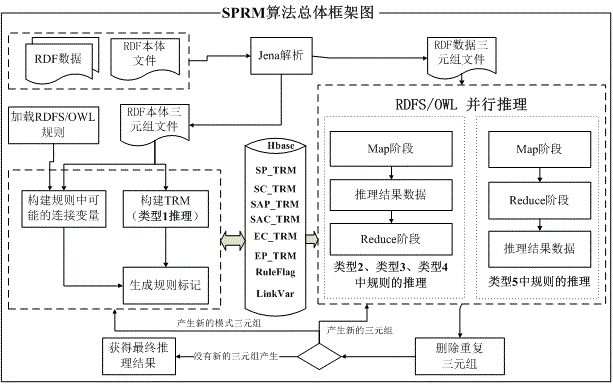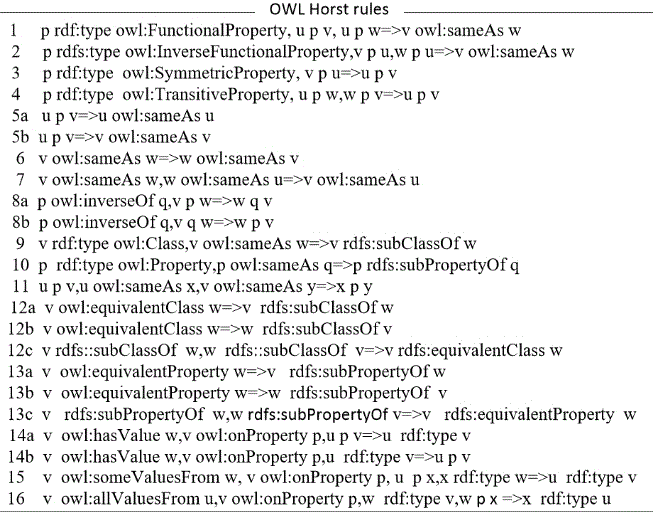RDF data distributed semantic parallel reasoning method
A reasoning method and distributed technology, applied in the field of Semantic Web, can solve the problems of too many MapReduce tasks to start, inefficient inference, inability to meet the needs of massive data, etc.
- Summary
- Abstract
- Description
- Claims
- Application Information
AI Technical Summary
Problems solved by technology
Method used
Image
Examples
Embodiment Construction
[0096]The present invention will be further described below in conjunction with the accompanying drawings and embodiments.
[0097] This embodiment provides a distributed semantic parallel reasoning method for RDF data, such as figure 1 As shown, it specifically includes the following steps:
[0098] Step S1: Load the pattern triplet, construct the TRM, and construct the connection variable information that may be connected in each rule according to the RDFS / OWL rules;
[0099] Step S2: Generate a rule labeling model according to the TRM and connection variable information;
[0100] Step S3: Divide connection variables into univariate and multivariate forms, divide RDFS / OWL rules into 5 types according to the type of TRM and connection variables, and design different reasoning schemes respectively;
[0101] Step S4: To Flag_Rule m = 1 executes parallel reasoning of RDFS / OWL rules and outputs intermediate results;
[0102] Step S5: delete repeated triplets in the intermedia...
PUM
 Login to View More
Login to View More Abstract
Description
Claims
Application Information
 Login to View More
Login to View More - R&D
- Intellectual Property
- Life Sciences
- Materials
- Tech Scout
- Unparalleled Data Quality
- Higher Quality Content
- 60% Fewer Hallucinations
Browse by: Latest US Patents, China's latest patents, Technical Efficacy Thesaurus, Application Domain, Technology Topic, Popular Technical Reports.
© 2025 PatSnap. All rights reserved.Legal|Privacy policy|Modern Slavery Act Transparency Statement|Sitemap|About US| Contact US: help@patsnap.com



